#A Militant Suffragette
Text

Asta Nielsen as the determined suffragette Nelly Panburne in 'Die Suffragette' ('A Militant Suffragette', Urban Gad, 1913). The character’s similarity with the name of the leading British suffragette of the period, Emmeline Pankhurst, emphasised the film’s engagement with the politics of the day. In Denmark, women gained the right to vote in 1915, in Great Britain in 1918, and in Germany in 1919.
195 notes
·
View notes
Text
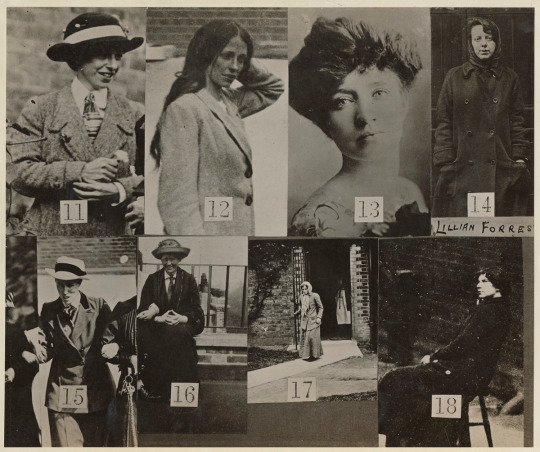
Surveillance Photograph of Militant Suffragettes
Criminal Record Office (active since c.1914)
National Portrait Gallery, London
Portraits of Mary Raleigh Richardson; Lilian Lenton; Kitty Marion (Katherina Maria Schafer); Lillian Forrester; Miss Johansen; Clara Elizabeth Giveen; Jennie Baines; Miriam Pratt. Surveillance photographs of militant suffragettes were issued to public galleries including the National Portrait Gallery in 1914. Most of the images in the composite group photograph were taken undercover while the women were in the exercise yards of Manchester or Holloway prisons. Of those included, Gertrude Ansell (1861–1932) (below, bottom row, second left), a professional typist, attacked Hubert Herkomer’s portrait of the Duke of Wellington at the Royal Academy and was forcibly fed 236 times.
96 notes
·
View notes
Text

"SCENE OF LATEST ATTEMPTED OUTRAGES BY BRITISH SUFFRAGETTES." Daily British Whig (Kingston, Ont.). May 28, 1913. Page 6.
----
The famous golf links at St. Andrews, Scotland, where the tournament is taking place. The militants threatened to ruin the links at this point by putting acid on the grass. The picture shows the clubhouse and the spot where the suffragettes were arrested.
[A pity they didn't do more.]
#golf#st. andrews#golf course#st andrews links#suffragettes#women's suffrage#militant suffrage#women in revolt#women in history#british history#a good walk ruined
0 notes
Text
if you blame the "state of modern feminism" on radical feminists methinks youre an idiot who has no real understanding what feminism truly is
more militant (radical) suffragettes (feminists) were also blamed for the way the mainstream thought of feminism over 100. fucking. years. ago.
and guess what? those same women are the ones who helped women gain rights through their *clutches pearls and gasps* RADICAL!!! efforts
if you blame the current state of feminism on "evil terfs" and radfems, youre no better than a meninist circa 2015
radfems arent a new concept, and we won't be your scapegoats anymore
205 notes
·
View notes
Text
The leftist belief in the righteousness of “punching up,” a derivation of standpoint theory, is also important here. Again, this idea has mutated from the reasonable observation that different groups have different knowledge based on their experience—I have never experienced being pulled over by a traffic cop as a Black man, and that limits my understanding of the police—to the idea that different rules apply to you depending on your social position. When an oppressed group uses violence against the oppressor, that is justified “resistance.” Many of us accept a mild version of this proposition: The British suffragettes turned to window smashing and bombing after deciding that letter writing and marches were useless, and history now remembers them as heroines. But somehow, in the case of the incursion from Gaza into Israel, the idea of “punching up” was extended to the murder of children. I simply cannot comprehend how any self-proclaimed feminist can watch footage of armed militants manhandling a woman whose pants are soaked with what looks like blood and decide that she has the power in that situation—and deserves her fate.
"The Progressives Who Flunked the Hamas Test"
64 notes
·
View notes
Note
Is it sad that your entire life is about trans people and having the same values as Nazis LMAO 🤣 you cis creeps have no life
Reported for hate speech.
Seriously though, this is the very first thing I saw when I clicked on this person's blog:
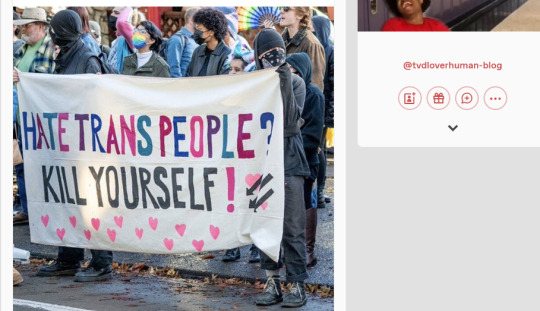

The followers of transgender ideology are getting more and more hysterical, hateful and murderously extreme: accusing someone against the forced sterilization, mutilation and medical experimentation upon trans-identified people of being a Nazi, all while openly and gleefully wishing for the murderous eradication of anyone who thinks differently to them.

It seems pretty obvious at this point that we're going to witness more and more actual terrorist acts from them (besides already routinely threatening and punching women at demonstrations), because they have so strongly formed a militant group identity around what should in reality only be considered a very rare medical condition people want to help, and are hating everyone else outside of it.
This is an utterly foolish and futile campaign strategy, because of what a minority of the population it is they necessarily represent: the literal Nazis of the 1920s/30s - or even the suffragettes before them - actually built their cause around claiming (wrongly, but still) to speak for half or more of the entire population, and so aimed to unite the majority, whereas the transgenderists are reliant upon the 99.9% of people that they are loudly hating and wishing violence upon to support them. Not the sharpest tools in the shed.
This is why many people are starting to say the LGBs need to lose the Ts from their movement, because it's not the Ls, Gs and Bs that are daily doing this evil and unhinged stuff, but the obviously unstable and indefensible acts of the most recent additions to their ranks are badly affecting the goodwill of the wider population to the coalition movement as a whole and diminishing popular support.
You know, I'm starting to come around to Elon's half-serious classification of the term "c*s" as a slur: I've never really taken it seriously before, because it's so ludicrous, but you can tell that people like the one above are genuinely using it with all the hate and contempt they can muster; it being, within their cult, the very worst thing they feel they can call someone else. So that really IS "hate speech", if anything is.
With that in mind, from today on I'm going to block anyone who uses that slur on Tumblr. That is what this ask has accomplished.
91 notes
·
View notes
Text
His Last Bow
Originally titled in full "His Last Bow. The War Service of Sherlock Holmes" and later "His Last Bow: An Epilogue of Sherlock Holmes", this was originally published in 1917.
It is the final story in His Last Bow, the final short story in the canon covered by Letters from Watson and agreed by all the key chronologists to be the final canon appearance of Holmes and Watson.
Sir Arthur Conan Doyle had openly supported British entry into the First World War in 1914.
The story came about after a visit to the Western Front in 1916; asked by a French general what Holmes was doing, Doyle had responded that he was too old to serve. He then decided to write this story as a means of boosting morale.
To put it mildly, the British public had gone a bit spy-crazy in the lead up to the war; fearing "Teutons serving them croutons" i.e. Germans living in the UK acting as intelligence agents for the Kaiser.
The Riddle of the Sands is one such work of popular literature on this theme, which is the subject of Letters from Carruthers coming in September.
There was also the fantastical works of William Le Queux, who started off with the French and Russians as his enemies before switching to the Germans; he also had his works serialised in the Daily Mail, a British middle-market tabloid that was founded in 1896 and has been happily engaging in right-wing sensationalism since to the point Wikipedia has banned them as a source. Le Queux for his part believed the Germans were out to get him for exposing their spy networks - he hadn't, they weren't and the Metropolitan Police refused him protection.
The Benz company had produced the first practical motor car in 1885; they of course later merged with Daimler to become Mercedez-Benz. I cannot find a 100hp example of their vehicles.
The German Chancellor in 1914, Theobald von Bethmann Hollweg, was a moderate, who reluctantly went along with many German policies like unrestricted submarine warfare and tried to initiate peace proposals on a number of occasions in the war before being ousted in 1917.
Flushing is the historical English name for the Dutch port of Vlissingen; it had a ferry connection to Sheerness until 1994.
At the outbreak of war, diplomats on both sides were allowed to return home unmolested, after locking down their embassies and burning anything sensitive they could not take with them.
Britain, France and Prussia had signed a treaty in 1839 guaranteeing the neutrality and independence of Belgium. The German invasion of the country on 3 August gave the UK justification for war and moved a Cabinet divided over the matter to firm unity.
There was a fear of Irish civil war at this point; the Liberal government, reliant on Irish and Labour support for a Commons majority after the two elections of 1910, had passed legislation creating a devolved government for the island, called Home Rule. This was vehemently opposed by Ulster Protestants and both sides were receiving weapons - from Germany in fact - in preparation for a fight as Whitehall tried to arrange a compromise. The Germans in fact believed the British would be distracted by a civil war, but in fact the Home Rule legislation was suspended for the duration and both militias decided to support the war effort. That stopped things... until the more radicial Irish Republic Brotherhood launched the Easter Rising of 1916.
"Window-breaking Furies" refers to the suffragette movement that sort votes for women, some of who engaged in direct action like breaking windows and also planting bombs or arson, although they made sure the latter was done when the buildings were empty to avoid killing anyone. These tactics were as controversial at the time as the tactics of modern-day groups like Just Stop Oil. When the war broke out, the suffragettes stopped their militant actions and supported the war effort; their imprisoned members being released as part of an amnesty.
John Bull is a national personification of the UK, typically a stout middle-aged man in a Union Jack waistcoast, frequently seen in cartoons at this time. He rather fell out of popular use post-war and is rarely seen today, unlike Britannia, who remains a widely used figure.
The Rosyth Dockyard was built from 1909 for refitting Royal Navy ships and submarines; although now privatised, it retains that role and is currently building the five Type 31 frigates.
Carlton Terrace was the home of the German Embassy until 1945; after the war, the property and its contents were sold off at auction. The Federal Republic of Germany set up at Belgrave Square in 1951 and remains there to this day.
Junkers were the land-owning aristocracy of Prussia, who exercised considerable political power up until 1945, at which point most of their holdings ended up in the USSR, Poland or what became East Germany. The land was broken up, usually ending up in collective farms; accused of war crimes, those Junkers who ended up in Soviet hands frequently ended up in NKVD camps or even executed. Their descendants did not get them back after reunification.
The King's English is another name for Received Pronunciation, the "standard" dialect and accent of British English.
Tokay or Tokaji is a sweet wine from the Tokaj regions of Hungary and Slovakia, the designation being protected under EU law in a similar way to Champagne. Imperial Tokay, which was the highest quality Tokaji Essencia, was reserved for the Austrian imperial cellars, often being passed to other European monarchs as gifts. This stuff is still drinkable after over 200 years and even the relatively new stuff isn't cheap.
A naval flotilla would be based at Harwich in both World Wars.
The reference to Holmes being sixty here is where the common estimate of 1854 being his birth year comes from.
Portland is a prison and young offenders' institution in Dorset. Notable past inmates include George Edalji (whose miscarriage of justice was exposed by Doyle), John Babbacombe Lee ("The Man They Couldn't Hang") and the controversial comedian Roy "Chubby" Brown.
Fratton is an area of Portsmouth.
In reality, the Home Section of the Secret Service Bureau, later MI5, had managed to identify the key German agents by monitoring their postal correspondence. The police then rounded them up in August 1914 and once the cross-sea cables were cut, contact with any agents in the UK became close to impossible. Little intelligence of any use came from them in any event; the Germans seem to have not even been aware of the British Expeditionary Force being sent to France, which was hardly a small event. Gustav Steinhauer, head of German naval intelligence's British section, got subjected to a rant about his agency's incompetence from the Kaiser that lasted the better part of two hours.
Twelve German spies would be executed during the war, eleven by firing squad at the Tower of London, which hosted its final execution (also of a spy) in 1941.
Skibbareen is a town in County Cork, now in Ireland.
The final speech by Holmes at the end also featured in the 1942 Basil Rathbone film Sherlock Holmes and the Voice of Terror, based on this story.
So Holmes and Watson drive off into the sunset. What happened to them after that? All we know is that both survived the war and at some point Dr Watson stopped writing about his dear friend. They deserve to have had a long retirement.
I will be doing these for the individual chapters of the novels next year; I have already done ones for the first two chapters of A Study in Scarlet that I will repost.
44 notes
·
View notes
Text

Helen McNicoll - The Chintz Sofa (ca. 1913)
The Chintz Sofa depicts the London studio McNicoll shared with her partner, British artist Dorothea Sharp (1874–1955), who poses in the painting. Although the image appears at first glance to show a scene of quiet, feminine domesticity, Natalie Luckyj suggests that the figure in The Chintz Sofa could be seen as a suffragette working on a piece of memorabilia for the women’s rights movement. In 1913, the suffrage campaign was at the height of its militant phase. Press reports on the violent protests and civil disobedience following the dismissal of the Reform Bill would have run alongside news of McNicoll’s election to the Royal Society of British Artists. (source)
59 notes
·
View notes
Photo

On this day, 6 February 1918, Britain introduced the Representation of the People Act of 1918, which conceded voting rights to some women. This had followed many years of militant and often violent struggle by women for the right to vote. The law gave the right to vote to women aged 30 and up who were property owners or the wives of property owners – essentially covering six million of Britain's 11 million women and excluding many working class and poor women. At the same time it extended the right to vote for all men by abolishing the property requirement. For the government this ensured that women's votes would not outnumber men's, many of whom had been killed during World War I. Millicent Fawcett, founder of the National Union of Women's Suffrage Societies said that they accepted the compromise as they did not want to "risk their prospects for partial success by standing out for more". Despite five million women still being disenfranchised, organised feminism as a mass social movement had largely ceased to exist following the outbreak of the war in 1914, and other than the right to vote there was a powerful backlash against women's rights. From women wage workers being lauded for saving the nation during the war, media outlets began attacking them for supposedly stealing men's jobs. For example journalist Philip Gibbs complained that ex-servicemen could not find work because "the girls were clinging to their jobs, would not let go of the pocket-money which they had spent on frocks." While nearly 1.5 million women entered the paid workforce during World War I, within three years of it ending, the number of women in paid employment had dropped to below its pre-war level. More information and sources on our Stories web app: https://stories.workingclasshistory.com/article/10607/voting-rights-for-some-uk-women Pictured: Asian suffragettes marching https://www.facebook.com/workingclasshistory/photos/a.296224173896073/2203301956521609/?type=3
130 notes
·
View notes
Text
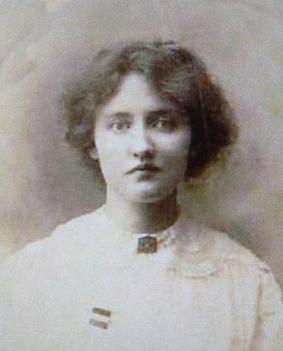

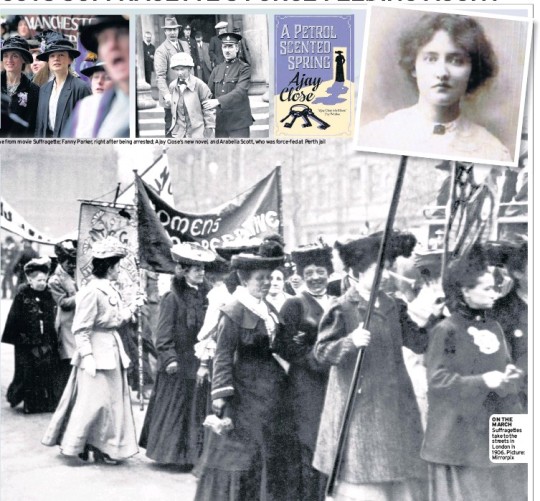
The Scottish Suffragette and campaigner Arabella Scott was born on May 7th 1886 in Dunoon.
The treatment of these women was barbaric, Arabella Scott was "the longest force-fed prisoner in Scotland, happening several times a day for over five weeks. I do not know how she endured it......
Arabella's mother was a teacher and her father served as a captain in the army for more than 25 years, she attended The University of Edinburgh and gained a Master of Arts degree and went on to become a schoolteacher.
Both Arabella and her sister Muriel were advocates for women's suffrage and were active speakers in Scotland for the cause and in 1909, were both arrested on the charge of obstruction in London after they tried to hand a petition to the British Prime Minister Asquith. They served 21 days at H M Prison Holloway.
Arabella was arrested and released several times over the following years, under the Cat and Mouse Act, and Act put into place so that suffragettes could not kill themselves in prison due to hunger strikes, instead when they became too weak they were released and then re-arrested at a later time.
In May 1913 Arabella was arrested with three other women and one man after an unsuccessful attempt to burn down Kelso Racecourse. She was sentenced to nine months imprisonment – as was the man whose crime was to drive them there. Janie Allen a suffragette journalist, bitterly compared his sentence with those who assaulted children and often got less than that.
She went on hunger strike and was released under the Cat and Mouse Act. Unlike others who went to ground once they were released Arabella stayed public. She had promised her employers, Leith School Board, that she would not take part in any more militant activity so she was kept on their list. She was arrested, went on hunger strike released and disappeared for 2 months. She was ‘found’ on a WSPU protest and returned to jail. She went on hunger strike again and was released again..
It took many months to ‘find’ her again, this time working as a WSPU organiser in Brighton. She was arrested and forcibly brought back to Edinburgh and jail. Again the same scenario ensued and she took the train to London before she was due back. She was ‘found’ accidentally while the house she was staying in was being searched for someone else. So, once again she was forcibly brought back but this time sent to Perth prison to be force fed.
Outside the prison gates, 3,000 people kept a vigil, although they were not even told what exactly was going in inside.
She was kept in isolation and force fed, a visible legacy of this remained in her chipped teeth. These were her battle scars, sustained when she tried to resist being force fed, her mouth held open and a mixture of eggs flour and milk were poured down her throat through a tube attached to a funnel, this happened twice a day every day during her incarceration
She emerged feeling more militant than ever.
All her life Arabella Scott upheld a passionate commitment to women's rights, under her married name Colville-Reeves emigrated to Australia.
She died on 27thAugust 1980, and her memorial is in the Palmdale Lawn Cemetery on the Central Coast of New South Wales.
Isn't it atrocious what men inflicted on these women...........
#scotland#scottish#women's suffrage#sufferagette#strong woman#strong women#womens rights#torture#history#barbaric
66 notes
·
View notes
Text
In many, though by no means all, respects, men have judged women's militancy by their own standards and have therefore missed the point as they are so prone to do. They have seen women's militancy as a contest of force in which women could never hope to win, and have therefore argued (despite abundant contrary evidence), that the women grew tired of the tactics when there was no prospect of success. But militant tactics were never intended to produce an outcome of 'might is right'; they were intended to expose men as the enemy and to make it clear what men were capable of doing to those whom they claimed to protect. And in this they were spectacularly successful. Women did not tire of these methods (as the number of volunteers for 'dangerous duty' reveals); on the contrary the harsher the methods employed by men (such as raiding WSPU premises, charging the Pethick-Lawrences and Emmeline and Christabel Pankhurst with conspiracy, preventing the publication of Votes for Women, imprisoning hundreds of women - Mary Leigh and Gladys Evans for five years - forcibly feeding women), the more women were prepared to be militant.
Actually, one could argue that the changes in tactics that Christabel made constituted a decrease in militancy - if one were concerned with human values. Originally the plan was for women to be caught, to be arrested and imprisoned, but after ‘Black Friday’, when so many women were viciously and sexually mauled and assaulted by the police, and when mothers began to say that their daughters might break windows but were not to go on any more demonstrations, the plan was changed to an attack on property (beginning with government property), and the idea was that women would try to avoid being caught.
‘It is only simple justice that women demand’, stated Christabel in her pamphlet Broken Windows. ‘They have worked for their political enfranchisement as men never worked for it, by a constitutional agitation carried on on a far greater scale than any franchise agitation in the past. For fifty years they have been striving, and have met with nothing but trickery and betrayal at the hands of politicians. Cabinet Ministers have taunted them with their reluctance to use the violent methods that were being used by men before they won the extension of the franchise in 1829, in 1832 and in 1867. They have used women's dislike of violence as a reason for withholding from them the rights of citizenship . . . . The message of the broken pane is that women are determined that the lives of their sisters shall no longer be broken, and that in future those who have to obey the law shall have a voice in saying what the law shall be. Repression cannot break the spirit of liberty.'
Christabel Pankhurst's analysis of male power (and how to expose it) was often uncannily accurate, so much so that Frederick Pethick-Lawrence described her as the most brilliant political theorist and tactician - ever! She found it relatively easy to set the stage for men to demonstrate that they valued their finances more than they valued women, and when women recognised this many of them became even more angry - and set out to break more windows, dig up more golf greens, and in their worst acts of all, commit arson. To which the government and the judiciary responded with an even greater show of force against women. Such force was not always displayed against men. Christabel was also quite accurate when she stated that the male government treated male militancy very differently. Many more, and more violent, deeds, in which there was often loss of life, were committed by men in the name of Ireland, and the government bent, rather than try to break the men. Most of the prominent suffragettes acknowledged that it was not the militancy itself which men were so indignant about - it was the fact that it was undertaken by women. This was a threat to the whole social order in a way that militancy from men was not.
-Dale Spender, Women of Ideas and What Men Have Done to Them
#dale spender#womens suffrage#womens history#militancy#male hypocrisy#british history#christabel pankhurst
8 notes
·
View notes
Photo

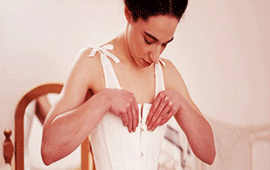


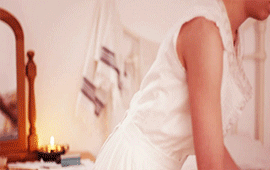




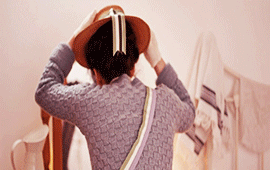
YouTube GIFs || Crows’ Eye Productions: Getting Dressed in 1910s London – Working Class Suffragette
The suffragettes were the militant wing of the Votes for Women movement in Britain in the early 20th century. The named was coined to satirize them, but they subverted that by making the name their own. It was a movement that transcended class boundaries. The meetings were timed so that women might be able to attend after their working day.
Women in service might work a 12-hour day, had little time off, virtually no rights, and no union representation. And, of course, they had no vote. Without a vote, they could be completely ignored; they were almost invisible.
#historyedit#edwardian fashion#historical fashion#crows eye productions#19th and early 20th#youtube gifs#nanshe's graphics
61 notes
·
View notes
Text

Surveillance Photograph of Militant Suffragettes
Criminal Record Office (active since c.1914)
National Portrait Gallery, London
Half-length photographs of Margaret Scott (Margaret Gertrude Schencke); Olive Leared (née Hockin); Margaret McFarlane; Mary Wyan (Mary Ellen Taylor); Annie Bell; Jane Short; Gertrude Mary Ansell; Maud Mary Brindley; Verity Oates; Evelyn Manesta.
Surveillance photographs of militant suffragettes were issued to public galleries including the National Portrait Gallery in 1914. Most of the photographs show women serving sentences in Holloway and Manchester and were taken undercover in prison exercise yards.
141 notes
·
View notes
Text
The lesson of these reflections is that the liberation of women can only be achieved if all four structures in which they are integrated are transformed – Production, Reproduction, Sexuality and Socialization. A modification of any of them can be offset by a reinforcement of another (as increased socialization has made up for decreased reproduction). This means that a mere permutation of the form of exploitation is achieved. The history of the last sixty years provides ample evidence of this. In the early twentieth century, militant feminism in England and the U.S.A. surpassed the labour movement in its violence. The vote – a political right – was eventually won. None the less, though a simple completion of the formal legal equality of bourgeois society, it left the socio-economic situation of women virtually unchanged. The wider legacy of the suffrage was practically nil: the suffragettes, by and large, proved unable to move beyond their own initial demands, and many of their leading figures later became extreme reactionaries. The Russian Revolution produced a quite different experience. In the Soviet Union in the 1920s, advanced social legislation aimed at liberating women above all in the field of sexuality; divorce was made free and automatic for either partner, thus effectively liquidating marriage; illegitimacy was abolished, abortion was free, etc. The social and demographic effects of these laws in a backward, semi-literate society bent on rapid industrialization (needing, therefore, a high birth-rate) were – predictably – catastrophic. Stalinism soon produced a restoration of traditional iron norms. Inheritance was reinstated, divorce made inaccessible, abortion illegal, etc.
"The State cannot exist without the family. Marriage is a positive value for the Socialist Soviet State only if the partners see in it a lifelong union. So-called free love is a bourgeois invention and has nothing in common with the principles of conduct of a Soviet citizen. Moreover, marriage receives its full value for the State only if there is progeny, and the consorts experience the highest happiness of parenthood."
From the official journal of the Commissariat of justice in 1939.
Women still retained the right and obligation to work, but because these gains had not been integrated into the earlier attempts to free sexuality and abolish the family no general liberation has occurred.
Juliet Mitchell
https://www.marxists.org/subject/women/authors/mitchell-juliet/longest-revolution.htm
7 notes
·
View notes
Text
When the efforts of the movement are frustrated, radical segments emerge and deploy more disruptive tactics. These serve to render the demands of their mainstream counterparts more palatable in the eyes of governments and the public, effectively advancing the entire movement’s agenda.
In the late 1950s, alongside the prospects of armed self-defence by Malcolm X and the Black Panthers, Martin Luther King Jr’s calls for dismantling segregation laws appeared less radical. Militant suffragettes destroying property made granting women the vote seem a reasonable concession. ...
Radical forms of resistance – from property destruction to hunger strikes and self-immolation – serve a similar function in the environmental movement. They highlight the urgency of the climate crisis as well as the reasonableness of demands by mainstream organisations, such as the need to swiftly phase out fossil fuel projects.
Of course, there is always a risk that more extreme tactics might alienate certain segments of the public. But research suggests that people tend to be more sympathetic towards radical tactics when they see that conventional political solutions are failing.
Published May 24, 2022
3 notes
·
View notes
Text
5 minute read
In 1938, a group of feminist agitators came together in London to tackle what they saw as the most pressing issue of their time: inequality in marriage. For the Married Women’s Association, the right to vote – won for women over 30 in 1918 – was just the beginning of women’s emancipation. The legal status of housewives was next.
If you were a married woman in the early 20th century, you had no rights in your home, nor in the housekeeping money your husband gave you, nor even in the bed you slept in, unless you had used your own money to buy it.
You were also paid less than men, while all the work in the home was exclusively your domain and was unpaid. Your husband, by contrast, would be paid an inflated income to support his dependants, termed a “family wage”, to which, ironically, you had no rights to whatsoever. In the eyes of the law, you were essentially invisible.
The Married Women’s Association sought to use the law to address the poverty women faced in relationships. As the association’s founder Juanita Frances put it:
These women’s story has long been overlooked. As I show in my new book, Quiet Revolutionaries (and accompanying podcast), what they were fighting for remains highly topical.
For the first time in at least 30 years, an increasing number of women are leaving employment to look after the family. This is hitting their career growth, their income potential and their pensions. Women are bearing the brunt of the spiralling cost of childcare in the UK, which the cost of living crisis is only likely to worsen. In the absence of better state support, the question – as it was for women in the 1930s – is whether there is anything the law can do.
Birth of the Married Women’s Association
I have done extensive archival research in the Women’s Library at the London School of Economics, where the association’s papers are held. The idea to form the group came from Dorothy Evans, a former militant suffragette.
Evans was lesbian and personally opposed to marriage. However, she saw reforming marriage as key to women’s emancipation. She contended that failing to recognise the value of housewives’ work, in the same way men’s work outside the home was, affected the lives of all women.
Evans recognised the leadership potential of Juanita Frances, a former nurse, burlesque dancer and conjurer’s assistant. Frances was new to the feminist movement and keen to make a difference. “How have I missed this all my life?” she would say of her involvement years later in an interview in 1986. She recalled: “I came bang into the feminist movement and it amazed me.”
The association had several prominent members. As well as being the association’s first president, Edith Summerskill was a doctor who was active in the establishment of the NHS, an MP, and the first woman to call herself a feminist in parliament.
The authors Vera Brittain and Dora Russell played important roles in the association, as did the pioneering lawyer Helena Normanton, the first woman to practise as a barrister and one of the first two women to be named King’s Counsel. Doreen Stephens’s involvement, meanwhile, was instrumental in her going on to become the first female BBC executive.
Their ideas were as radical as their CVs suggest. They argued that because men could not go out to work without their wives looking after the home and children, the wives should be entitled to share the husband’s property. The domestic and caregiving work they were largely responsible for made an undeniable contribution to the family’s wealth.
Reforming family law
To have this recognised, the association proposed a new marriage law. This legislation would give married women a legal right in their spouse’s property during marriage and a right to know what he earned.
Ultimately, the association could not get its new marriage law enacted. Its proposals were viewed as too extreme. For many, the law focusing on the rights of married women was akin to interfering in the private world of the home. An article in a 1952 edition of the Daily Mirror characterised these women as threatening man haters:
Nonetheless, the association wrought considerable influence in terms of wider family law. While their ambition of equal partnership was revolutionary, their methods were quiet, yet persistent.
Association members worked behind the scenes to make it easier for women to enforce maintenance after divorce when husbands refused to pay it. They were instrumental in getting the Married Women’s Property Act 1964 enacted, which saw wives given the right to a one-half share in housekeeping savings.
They also helped Summerskill secure the right for deserted wives to stay in their home via her Matrimonial Homes Act 1967. And they pressurised the government into introducing the Matrimonial Proceedings And Property Act 1970. This law, still in force as part of the Matrimonial Causes Act 1973 today, gave the homemaking spouse rights in property on divorce.
The fight goes on
The status of women has changed unrecognisably since the early days of the association. The broader problems of gender inequality, however, endure.
Research shows mothers are still more likely to make career sacrifices than fathers. Women take longer than men to recover financially when their marriage has broken down. And the issue of pension provision can also create significant financial inequalities between spouses.
Dismissing these statistics as simply reflecting women’s “choice” becomes difficult when the price of childcare rises to the extent that employment reaps little financial gain.
In the last 12 months in the UK, the number of women aged 25-34 not in work has risen by 13%. And with childcare costs strikingly higher than almost everywhere else in Europe, mothers increasingly cannot afford to return to work.
Though caregiving is an often marginalised, female experience, some men are, of course, making these sacrifices too. However, until these contributions are valued in law, as the Married Women’s Association argued more than half a century ago, the ambition of equal partnership in marriage cannot be realised. In failing to value women’s work in the home, we are still failing women.
22 notes
·
View notes